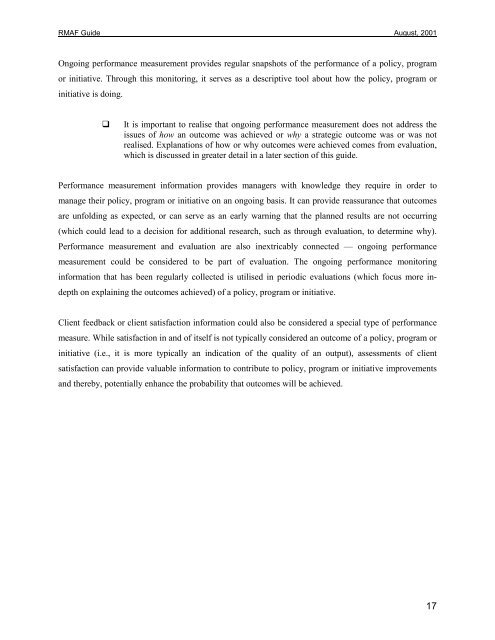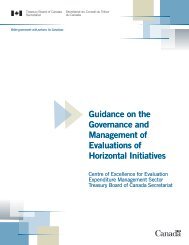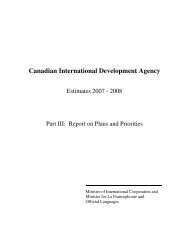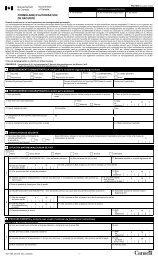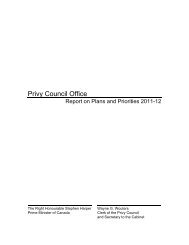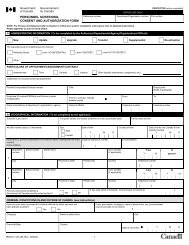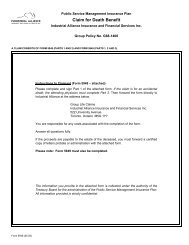Guide for the Development of Results-based Management and ...
Guide for the Development of Results-based Management and ...
Guide for the Development of Results-based Management and ...
You also want an ePaper? Increase the reach of your titles
YUMPU automatically turns print PDFs into web optimized ePapers that Google loves.
RMAF <strong>Guide</strong> August, 2001Ongoing per<strong>for</strong>mance measurement provides regular snapshots <strong>of</strong> <strong>the</strong> per<strong>for</strong>mance <strong>of</strong> a policy, programor initiative. Through this monitoring, it serves as a descriptive tool about how <strong>the</strong> policy, program orinitiative is doing.It is important to realise that ongoing per<strong>for</strong>mance measurement does not address <strong>the</strong>issues <strong>of</strong> how an outcome was achieved or why a strategic outcome was or was notrealised. Explanations <strong>of</strong> how or why outcomes were achieved comes from evaluation,which is discussed in greater detail in a later section <strong>of</strong> this guide.Per<strong>for</strong>mance measurement in<strong>for</strong>mation provides managers with knowledge <strong>the</strong>y require in order tomanage <strong>the</strong>ir policy, program or initiative on an ongoing basis. It can provide reassurance that outcomesare unfolding as expected, or can serve as an early warning that <strong>the</strong> planned results are not occurring(which could lead to a decision <strong>for</strong> additional research, such as through evaluation, to determine why).Per<strong>for</strong>mance measurement <strong>and</strong> evaluation are also inextricably connected — ongoing per<strong>for</strong>mancemeasurement could be considered to be part <strong>of</strong> evaluation. The ongoing per<strong>for</strong>mance monitoringin<strong>for</strong>mation that has been regularly collected is utilised in periodic evaluations (which focus more indepthon explaining <strong>the</strong> outcomes achieved) <strong>of</strong> a policy, program or initiative.Client feedback or client satisfaction in<strong>for</strong>mation could also be considered a special type <strong>of</strong> per<strong>for</strong>mancemeasure. While satisfaction in <strong>and</strong> <strong>of</strong> itself is not typically considered an outcome <strong>of</strong> a policy, program orinitiative (i.e., it is more typically an indication <strong>of</strong> <strong>the</strong> quality <strong>of</strong> an output), assessments <strong>of</strong> clientsatisfaction can provide valuable in<strong>for</strong>mation to contribute to policy, program or initiative improvements<strong>and</strong> <strong>the</strong>reby, potentially enhance <strong>the</strong> probability that outcomes will be achieved.17


